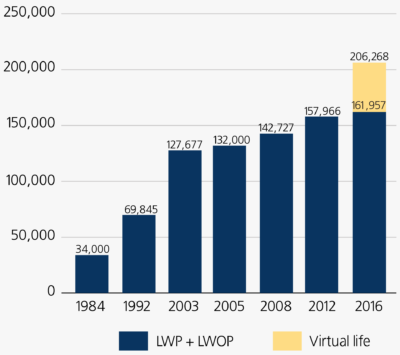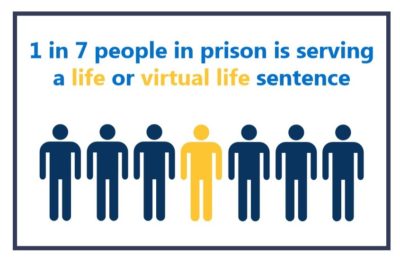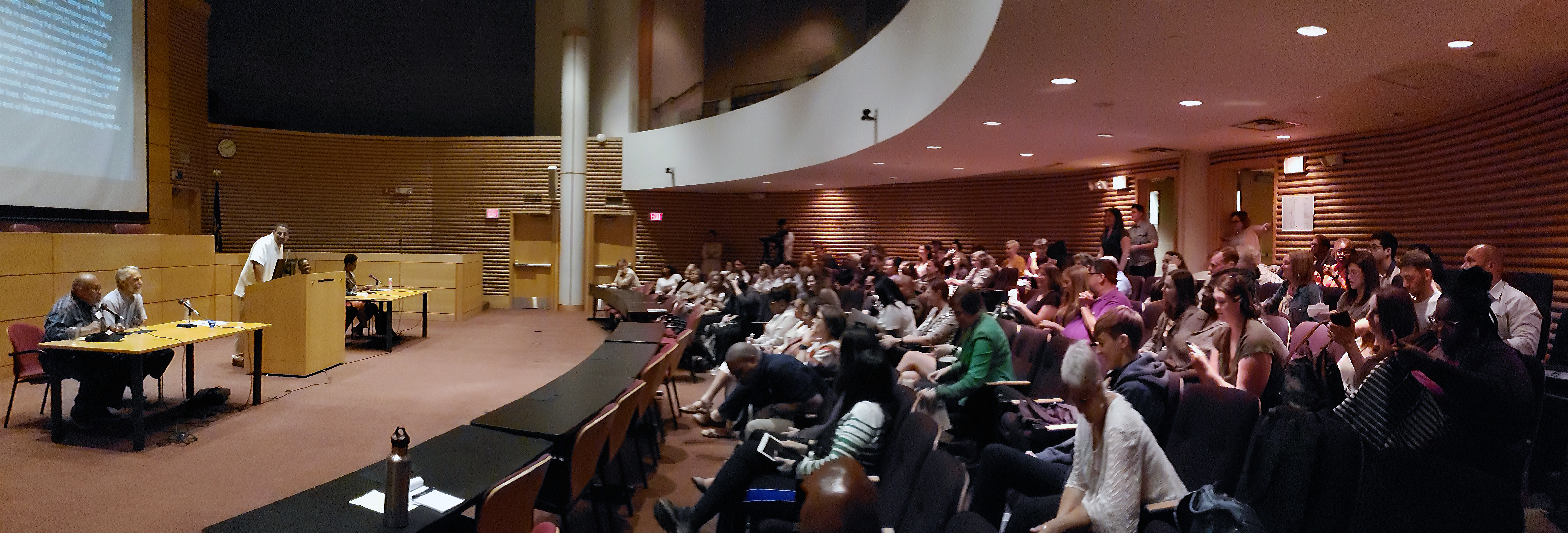
Image is from the Sentencing Project’s Still Life report:
https://www.sentencingproject.org/publications/still-life-americas-increasing-use-life-long-term-sentences/
Four members of the Safe & Just Michigan team attended the two-day convening on Ending Perpetual Punishment in Detroit on July 12-13. The aim was to bring together representatives from organizations who are actively trying to reduce life and long sentences, to discuss what is effective and to strategize next steps. The convening included over 70 community organizers, activists, directly impacted persons and their family members from 12 states across the country. American Friends Service Committee’s Michigan Criminal Justice Program hosted the event with the support of several other organizations, including Safe & Just Michigan.
The keynote address was given by Marc Mauer, the executive director of The Sentencing Project and co-author of the recent book on the issue, The Meaning of Life: The Case of Abolishing the Life Sentences with Ashley Nellis. The keynote address, which was open to the public, began with an overview of what life sentences are and the increase of life sentences in recent decades.
There are three sentences commonly included in the understanding of life sentences: Life with Parole (LWP), Life without Parole (LWOP) and virtual life sentences. Virtual life includes sentences with minimums of 50 years or more that are likely to outlast a person’s lifespan and have just begun to be recognized as life sentence.
In The Sentencing Project’s 2017 report Still Life they found over 200,000 people (or 1 in 7 people in prison) are serving life or virtual life sentences. This is more than a 600 percent increase in the last 32 years. To put this in context, the total prison population in all state and federal prisons in the United States in the early 1970s was 200,000. It is important to note the increase in life sentences has largely been driven by policy decisions rather than crime rates.
After establishing the problem of life and long sentences, Mauer proposed the solution: a 20-year maximum sentence. Decades of criminological research support this proposal. It has been consistently found that involvement in criminal behavior decreases as people age. Essentially, many of people age out of crime. Further, while those incarcerated are becoming less like to be involved in criminal behavior, they are also becoming more expensive to incarcerate.

Image is from the Sentencing Project’s Still Life report:
https://www.sentencingproject.org/publications/still-life-americas-increasing-use-life-long-term-sentences/
Mauer ended his keynote with several steps that can be taken in the short term while working to achieve that ambitious goal. Mauer and his co-author suggest eliminating LWOP sentences, establishing a second-look policy for those serving life and long sentences, depoliticizing the parole process, and expanding compassionate release. SJM supports these policy recommendations.
The keynote address was followed by a discussion from three formerly incarcerated people who had served more than 20 years each before their release. The panelists included Checo Yancey, the director of Voters Organized to Educate (VOTE); Romarilyn Ralston, the program director of Project Rebound at the California State University-Fullerton; and Emile DeWeaver the co-founder of Prison Renaissance. Each panelist responded to the keynote address in a different way, but three themes were the significance of language, the need to acknowledge gender differences and the importance of listening to those who are and have been directly impacted by these long sentences.
On the second day of the convening, we shifted gears and worked together in small groups to develop recommendations on different aspects of long sentences. The groups differed in their approaches and recommendations, but the themes from the panel the night before were a common thread through the work. One of the most important take-aways from the convening is the need to prioritize the voices of the impacted — not only those who have been released from long sentences, but those who are still serving them, too.
Safe and Just Michigan is researching life and long sentences in Michigan and will be publishing several blog posts and a full report later this year.
~Anne Mahar, PhD
Research Specialist
Photo Credits:
Both data images are from the Sentencing Project’s Still Life report:

